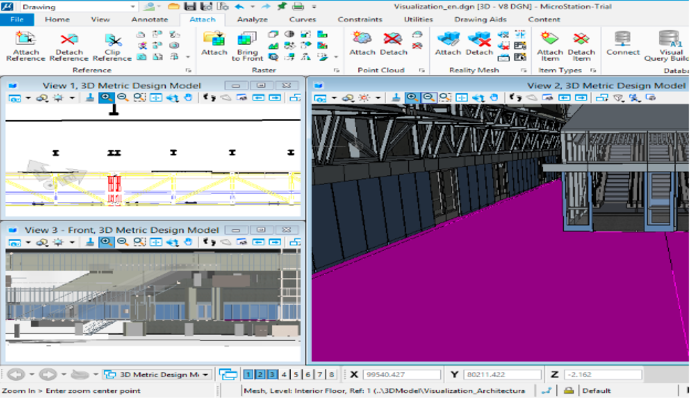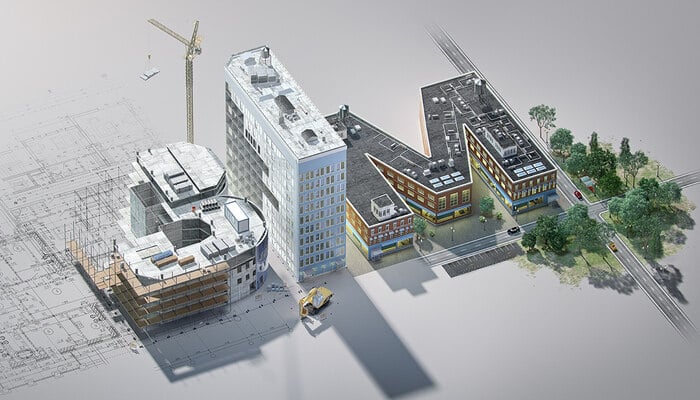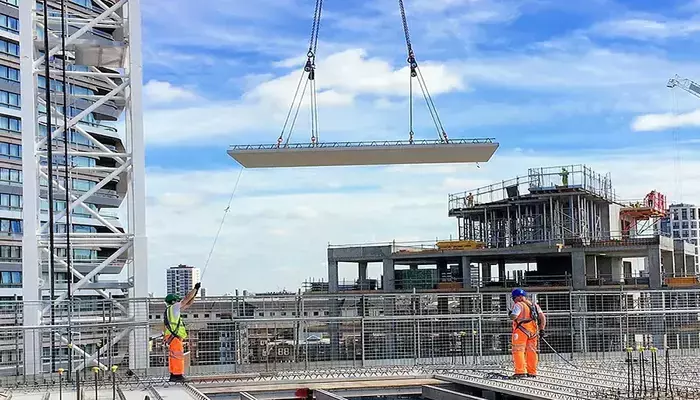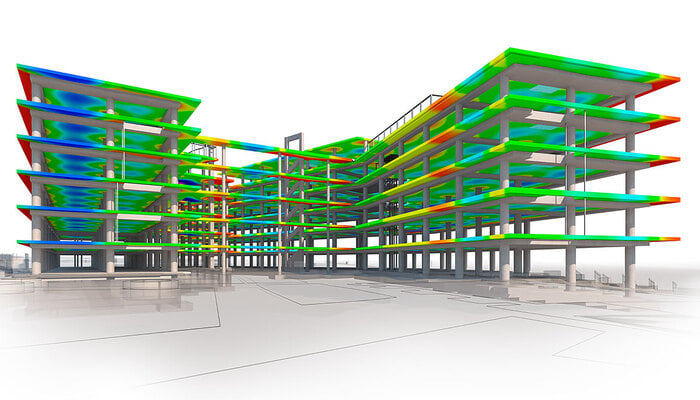The Significant Role of BIM in Leading the Way Forward for Execution Engineers

Table of Contents
BIM is transforming how execution engineers plan, coordinate, and execute construction projects by combining data, design, and efficiency.
Rapid urbanisation is fueling the need for fast-paced construction and infrastructure development around the world. A study by the Institute of Civil Engineers, United Kingdom, suggests that the global construction industry is projected to reach a value of 15.5 trillion by 2030. This implies that the demand for professionals in the Architecture, Engineering and Construction (AEC) industry will surge in the near future, especially those who can manage the process of construction in projects.
Building Information Modelling (BIM) bridges design and execution by helping engineers plan, coordinate, and manage construction projects more effectively. Through accurate 3D models, real-time collaboration, and sustainability insights, BIM enables execution engineers to achieve precision, safety, and efficiency across every project phase.
Who is an Execution Engineer?
Execution engineers in the AEC industry are responsible for overseeing construction activities. They manage contractors, ensure precise execution of drawings on site, monitor site safety, keep a check on quality control and assure timely project completion. They also prepare and review construction schedules as per the developments on-site.
Skills Required to Become an Execution Engineer
Becoming an execution engineer requires a combination of technical and soft skills. Technical skills include a solid understanding of engineering principles, as well as knowledge of building bye laws, codes and regulations. Familiarity with processes such as Building Information Modeling, or BIM, for execution engineers, and management softwares such as Microsoft (MS) Project is also important. Execution engineers must have strong analytical skills and attention to detail, as well as an ability to solve complex problems. Other important soft skills include leadership, time management, and the ability to deliver under intense work pressure whilst meeting pressing deadlines.
Salary of an Executive Engineer
According to Glassdoor, the average salary for an Execution Engineer in the United States is around $1,02,574 per year. Whereas in India, the average expected salary of an Execution Engineer is ₹6,65,590 per year. These numbers can vary depending on experience, location, and company size.
Read more: Salaries and Career Growth of BIM Professionals Across the World
Why is BIM technology the Next Big Thing in Execution Engineering?

Building Information Modeling (BIM) is a process of creating and managing digital information about a building or infrastructure throughout its lifecycle, from design and construction to operation and maintenance. While the technology is a well-known tool to automate design and construction processes in the architecture, engineering, and construction (AEC) industry, in recent times, it has also become increasingly popular in the field of execution engineering owing to its ability to:
1. Improve Collaboration and Coordination
BIM allows architects, engineers, contractors, and other project team members to work together on a shared digital model of a building. This helps professionals keep a real-time quality check on the construction work. It also helps avoid confusion on the project site, which often occurs when coordinating and working with multiple traditional 2D drawings. With BIM, all the people involved in a project have access to the same information at all times, which enables better decision-making and smoother communication.
2. Reduce Errors and Rework
The use of BIM reduces errors and the need for rework during the design and construction phases. Since the digital model contains a wealth of information about a building, such as its structural anatomy, materials used, and servicing systems, potential conflicts or errors can be identified and addressed much before construction begins. This helps reduce costly delays and change of material orders that can occur when errors are discovered during construction.
3. Increase Efficiency and Sustainability
Having a BIM model to analyse different design options and construction methods allow execution engineers to optimise a building's performance and reduce waste. BIM can also help reduce energy consumption and carbon emissions by allowing designers to analyse the building's energy performance and identify appropriate areas for improvement.
4. Improve Facility Management and Maintenance
Another benefit of BIM is its ability to improve facility management and maintenance. The digital model can be used to store and manage information about the building's components, systems, and maintenance schedules. This information can be accessed and updated throughout the building's lifecycle, which can help reduce maintenance costs and prolong the building's lifespan.
5. Enhanced Cost Planning
As a data-driven platform, BIM can provide execution engineers will accurate material quantity estimates, labor requirements, and equipment costs. This kind of precision allows professionals to provide their clients with realistic Bill Of Quantities (BOQs) and track project expenses as the construction work progresses. This reduces the likelihood of budget overruns and unforeseen expenses.
6. Improved Site Safety
BIM for execution engineers facilitates the visualization of construction sequences, enabling engineers to plan and optimize workflows in a way that minimizes safety hazards and enhances worker well-being. Additionally, BIM's ability to share project data in real-time promotes better communication among the entire construction team, ensuring that all stakeholders are well-informed about safety protocols and changes.
How BIM Impacts Project Performance?
Building Information Modelling (BIM) plays a crucial role in improving project performance across quality, cost, and time dimensions. Execution engineers use BIM-driven workflows to enhance coordination, streamline decision-making, and ensure data accuracy throughout every construction phase.
1. Quality and Accuracy Improvements
BIM ensures precision by maintaining consistent model data across disciplines. Execution engineers can detect design inconsistencies early, preventing costly construction-stage issues and ensuring high-quality output.
2. Timely Delivery and Resource Management
Through 4D simulation and real-time progress tracking, BIM helps engineers visualise construction sequences and optimise timelines. It enhances scheduling accuracy and reduces project delays by aligning materials, manpower, and equipment in a structured way.
3. Cost and Sustainability Outcomes
BIM tools enable data-backed cost estimation and sustainable material choices. By reducing waste and improving energy modelling accuracy, execution engineers achieve better financial and environmental outcomes.
Overall, BIM transforms project performance by enabling efficient workflows, informed decision-making, and predictable outcomes in execution engineering.
5 Applications of BIM for Execution Engineers

Managing a multitude of tasks on site can be overwhelming. To ease this work load and achieve work optimization, an increasing number of execution engineers are embracing BIM. Here is how BIM for execution engineers is facilitating ease of work:
1. Design Coordination
BIM provides a centralised platform where all project stakeholders can view and edit the design model concurrently. This ensures that all design elements of the project are compatible and work together seamlessly. Design conflicts and discrepancies are easily identified and resolved before construction, resulting in reduced rework, cost savings, and fewer errors.
2. Preparation of BOQ and Estimation
BIM for execution engineers allows the creation and monitoring of Bills of Quantities (BOQs) that include descriptive material specifications. This information can be used by execution engineers to generate accurate material quantities and cost estimates, reducing the risk of project overruns.
3. Construction Planning and Sequencing
BIM supports construction planning and sequencing by enabling the execution engineer to create 4D simulations of the construction process. This helps identify construction sequencing issues before the project execution begins, resulting in better planning and scheduling.
4. Clash Detection and Resolution
BIM can identify potential conflicts between various building mechanisms, such as structural, mechanical, electrical, and plumbing. This helps the execution engineer follow the project timeline and meet all milestones on time. Clash detection also ensures that all building systems are efficiently working together, resulting in improved building performance.
5. Safety Planning and Quality Control
BIM can recognize safety hazards and risks before the construction work begins. This helps the execution engineer to implement safety measures and procedures and prevent accidents and injuries. Additionally, BIM can be used to analyse materials and construction quality to ensure that the structure meets appropriate industry quality standards.
Popular BIM Software for Execution Engineers

1. Autodesk Revit
2. Trimble SketchUp
3. Bentley MicroStation

4. Vectorworks Architect
5. ArchiCAD
Read: AutoCAD vs ArchiCAD: Which One Should You Go For In 2022?
6. Tekla Structures
Designed specifically for the construction industry, Tekla Structures is a powerful BIM software option for execution engineers. Its features include 3D modelling, detailing, and fabrication tools, as well as project management and collaboration capabilities.
Top BIM Courses for Execution Engineers
As BIM continues to become an essential work tool in the construction industry, it is essential for professionals, especially those working with multiple teams, to keep up with the latest software and training to remain competitive. Execution engineers are such experts who need upkeep in technological advancements. Below are some of the most value-rich and professional digital courses of BIM for execution engineers:

1. BIM Professional Course by Novatr
The BIM Professional Course by Novatr is designed for students and young as well as mid-career professionals who want to learn everything about the BIM workflow. The course curriculum covers topics such as BIM modelling, quantification and construction sequencing. It also includes many hands-on exercises to help the learners practise their skills.
2. BIM Fundamentals for Engineers and Architects by Autodesk
Offered by one of the leading software companies, Autodesk, its BIM Fundamentals course is a great choice for professionals who are new to BIM. This course covers the basics of BIM, including 3D modelling, clash detection, and design visualisation.
3. Introduction to BIM Management by Coursera
Introduction to Building Information Modeling (BIM) Management by Coursera covers the fundamental concepts of BIM and its application in construction projects. It is a self-paced course and consists of video lectures, quizzes, and hands-on assignments.
4. Advanced BIM Management for Construction by Udemy
For execution engineers looking to take their BIM skills to the next level, the Advanced BIM Management for Construction course offered by Udemy is a great option. This course covers advanced topics such as BIM data management, 4D modelling, and sustainability analysis.
In Conclusion
BIM empowers execution engineers to transform traditional construction practices through digital precision and collaboration. By integrating data-rich 3D models with real-time project insights, engineers can manage scheduling, resource allocation, and coordination more effectively. From accurate BOQ preparation to proactive clash detection, BIM streamlines every stage of execution, ensuring projects are delivered efficiently and sustainably.
BIM is redefining how execution engineers manage modern construction. As the AEC industry grows more data-driven, learning BIM tools and workflows is essential for professional growth. Explore the BIM Professional Course for Civil Engineers, offered by Novatr to upgrade your career in digital construction.
To know more about BIM and how it is helping civil engineers, head to our Resources page.
Frequently Asked Questions:
1. What is BIM in execution engineering?
BIM, or Building Information Modelling, in execution engineering, involves creating and managing digital representations of a construction project. It helps execution engineers visualise the entire construction process, coordinate with design teams, and ensure the project aligns with planned timelines, costs, and quality standards.
2. How does BIM help execution engineers?
BIM improves coordination among teams, identifies design clashes early, reduces rework, and ensures timely material procurement. It also enhances cost accuracy, site safety, and sustainability by integrating all project data into a single, dynamic model.
3. Which BIM software is best for execution engineers?
Commonly used BIM tools include Autodesk Revit, Navisworks, Tekla Structures, and ArchiCAD. Each software supports different aspects of construction from modelling and scheduling to clash detection and quantity take-offs, making them essential for efficient project execution.
4. Why is BIM important in modern construction?
BIM ensures better collaboration, data transparency, and workflow automation, reducing delays and material waste. It empowers teams to make informed decisions through 3D, 4D, and 5D modelling, leading to higher efficiency and cost savings throughout the project lifecycle.
5. How can I learn BIM as an execution engineer?
Execution engineers can learn BIM through certified online programs like Novatr’s MCD course, Autodesk training modules, or project-based BIM workshops. These programs provide hands-on experience with BIM software and workflows relevant to real-world construction scenarios.

 Thanks for connecting!
Thanks for connecting!




.png)
-1.png)



.png)



